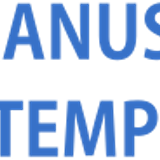Development Of A Streamline-Based Heat Transport Model For Thermal Oil-Recovery Simulation
Abstract
Fluid transport calculations based on streamlines have been used successfully for years to model two-phase in compressible flow simulations", The pressures for defining the streamlines are obtained by assuming that the reservoir fluids and rock are incompressible and that flow is in the steady state, which yields a time-independent equation that can be solved to define the fixed pressure distribution. Streamline tracking is performed with the pressure field to advance saturations or compositions. In this approach, the changing pressure field and the movement of fluids are not tightly connected, which results in inaccuracies in the solution.
The streamline approach has recently been extended to various applications, such as compositional and black oil problems for updating the composition and saturation, In cases, a non-linear equation for the pressure is solved assuming unsteady-state flow but compressible fluids and rock, followed by solving the conservation equations in sequence or fully implicitly, i.e. the pressure and the saturation equations are solved together along each streamline. In this approach, most of the physical parameters that depend on the pressure changes are accounted for throughout the solution.The major limitation of the streamline method is that applicability is restricted to convective problems only. In practice, the contribution of physical diffusion due to gravitational and capillary forces must be considered in modeling a reservoir undergoing a displacement process. The model including diffusion cannot be solved using one dimensional (1D) streamlines. The operator splitting technique has been proposed to avoid this restriction, The idea is to isolate the convective flow from the diffusion due to gravity for separate solution. The first part is calculated along the common streamline trajectories and the second part is determined by the direction of gravity.
Based on recent advances in streamline based simulation techniques, we have extended the methods to the thermal oil-recovery simulation. Modeling thermal processes is difficult due to the many complex mechanisms, high degree of non-linearity, and requirements for appropriate thermodynamic formulation to account for the changes in properties with temperature and pressure. The present study approached the problem from a different angle in the streamline framework. An operator splitting technique was applied to handle the heat diffusion due to gravity, capillary, and conduction effects, and the implicit method was used for solving the highly non- linear convective streamline and diffusive equations. A practical rule was introduced to select the time step for pressure updates to reduce the time-lag effects on the coefficients in the phase conservation equations.
A sequential thermal simulator, which solves the pressure and heat equations sequentially, was developed and tested for simulations of hot water-flooding in heavy-oil reservoirs. First we performed simulation with a two dimensional (2D) heterogeneous reservoir to evaluate the main characteristics of the streamline method such as the number of streamlines, the grid refinement along the streamlines, and the time step size. Then we performed three-dimensional (3D) simulation to examine how the gravity mechanism affects the production performance. The solutions obtained using a commercial thermal simulator were used to compare and validate the developed model.Keywords
Full Text:
PDFReferences
Doyle, R.E., Wurl, T.M., Journal of Petroleum Technology, 23, 373 (1971).
Martin, J.C., Wegner, R.E., SPE Journal, 31, 313 (1979).
Renard, G., In Situ, 14, (2), 175 (1990).
Batycky, R.P., Thiele, M.R., Blunt, M.J., The 10th Annual Report, Stanford Center for Reservoir Fore- casting (SCRF), Stanford University (1997).
Ponting, DK, Proceedings of the SPE Asia Pacific Conference, Kuala Lumpur, Malaysia, 1998, Paper SPE 39756.
Ingebrigtsen, L., Bratvedt, F., Berge, J., Proceed- ings of the SPE Reservoir Simulation Symposium, Houston, Texas, 1999, Paper SPE 51904.
Crane, M., Bratvedt, F., Bratvedt, K., Childs, P., Olufsen, R., Proceedings of the SPE Annual Tech- nical Conference and Exhibition , Dallas, Texas, 2000, Paper SPE 63156.
Bratvedt, F., Gimse, T., Tegnander, C., Transport in Porous Media, 25, (1), 63 (1996).
Batycky, R.P., Thesis, Stanford University, Califor- nia, USA, 1997.
Computer Modeling Group Ltd., STARS Version 2003 User's Guide, Calgary, Canada (2003).
Brantferger, KM, Pope, GA., Sepehrnoori, K., Pro- ceedings of the 11th SPE Symposium on Reservoir Simulation, Anaheim, California, 1991, Paper SPE 21253.
Cicek, S., Ertekin, T., Proceedings of the European 3-D Reservoir Modeling Conference, Stavenger, Norway, 1996, Paper SPE 35516.
Peaceman, DW, SPE Journal, 23, (3), 531 (1983).
Shutler, N.D., Proceedings of the SPE 43rd Annual Fall Meeting, Houston, Texas, 1968, Paper SPE 2233.
Coats, K.H., SPE Journal, 28, 235 (1976).
Pollock, D.W., Ground Water, 26, (6), 743 (1988).
Aziz, K., Settari, A, "Petroleum Reservoir Simula- tion," Applied Science Publisher, New York (1979).
Fanchi, J.R., "Integrated Flow Modeling," Elsevier Science B.V., Amsterdam (2000).
Datta-Gupta, A., King, M.J., Advances in Water Resources, 18, 9 (1995).
Karlsen, K.H., Risebro, N.H., Numer. Math., 77, (3), 365 (1997).
Karlsen, K.H., Lie, K.A., Risebro, N.H., Frøyen, J., In Situ, 22, (1), 59 (1998).
Karlsen, K.H., Lie, K..A., IMA. J. Numer. Anal., 19, (4), 609 (1999).
DOI: https://doi.org/10.29017/SCOG.28.2.870

This work is licensed under a Creative Commons Attribution-NonCommercial-NoDerivatives 4.0 International License.






